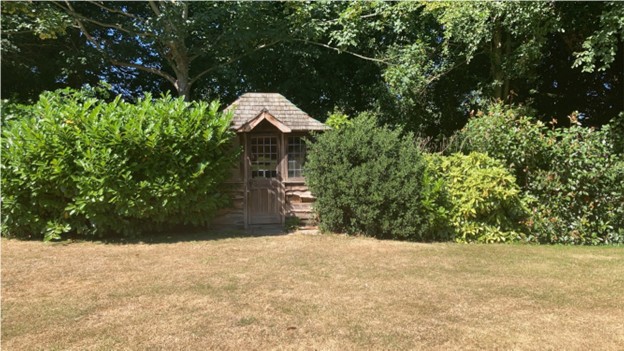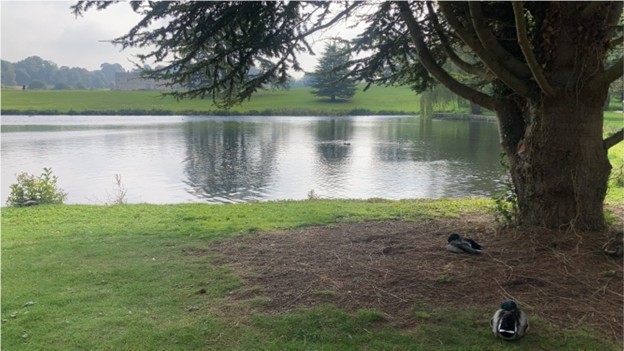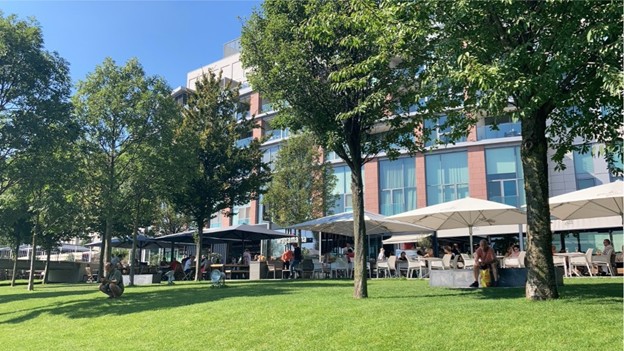Slender, healthy, tall – but not too tall. Soft and comforting, resilient and of course, beautiful. These are all words that you may use to describe a partner; however, they may also be used when talking about the attributes of lawns.
Lawns have been a status symbol since the thirteenth century – the perfectly manicured blades of grass as important as a tidy home, a successful career and a nice car. It may be difficult to understand what is truly wrong with this standard. From the outside, it doesn’t seem to harm anyone. However, the current standard of lawn maintenance expected of homeowners and athletes has contributed to a decrease in biodiversity and a growing pressure to meet a capitalistic standard of beauty.
So where did it go wrong?
What is Beneath Our Feet? A Brief History of Lawns
A grass lawn is an area of land, consistently maintained through mowing to keep it short. For a particularly pleasant patch of grass, only 329 billion gallons of municipal water is required each summer day – a large water bill for today’s grass maintenance!
In their infancy, however, grass lawns were not maintained as a status symbol. Instead, English and French nobility maintained short grass lawns to make enemies more visible when attempting to invade their grounds. Lawns eventually developed into a status symbol during the 17th century; the idea popularised by landed gentry who used their land recreationally instead of for farming purposes. This marked a shift towards a more aesthetically driven reason for lawn maintenance.
The Elitism Behind Touching Grass
I am going to talk about golf – the sport which requires acres of perfectly maintained land just so someone can justify buying a small (and otherwise useless) vehicle. Aside from the elitism associated with golf, in the form of exclusive clubs, the use of the land is reminiscent of 17th century landed gentry; a period that was so long ago that we ought to have progressed from it.
In 2022, the UK experienced droughts. In reaction to this, leading water companies asked individuals and businesses to restrict their water usage. However, golf courses were given an exemption to this. This water could have been used by the individuals who needed it, instead of the land used for a sport.
In contrast, ways to incorporate natural grass are being (re)introduced (because plastic everything has not always been a thing) in football, with mixed reactions to this (re)introduction. This is similar to ‘Augusta syndrome’, where golfers expect each course to be as beautiful as the Augusta National Golf Club in the United States. No sporting area, whether it is a pitch or a court, will be idyllic. Not only because it shouldn’t be, due to environmental costs, but that it often cannot be, due to monetary costs. Whilst there is no true solution to fixing sporting grounds, we should all work to find a solution that works for both the planet and the athletes.
Why You Should Consider Breaking Up with Traditional Lawns

As lawns became increasingly accessible, so did the beauty standard associated with them. To make way for more green spaces, lawns often replaced native forests and flora. Today, private gardens and grasslands account for 25% of urban areas in the UK – the environmental and monetary cost associated with this being relatively high. Aside from the water used for lawn maintenance, harmful pesticides and fertilisers are also used to maintain the luscious look – the use of which is harmful to the environment. The use of leaf blowers and lawn mowers also contribute to increasing your individual carbon footprint.
It may be time to break up with the standard of lawn that society has come to normalise. However, with lawns becoming synonymous with order (seen in the United States, where Homeowners’ Associations can impose legal sanctions on those who refuse to mow their lawns) this may be difficult. At first, the positives of our beloved lawns may influence us into keeping them. Sure, it is true that lawns provide space for soil organisms, provide people and animals a space to socialise during warmer months and are already very present within society. It is also true that overly manicured lawns do not help in minimising carbon dioxide, but instead increase it.
Although today’s lawns are beautiful – allowing people to socialise and exercise, continuing to maintain the standard that has been set may become problematic. Despite this, there are ways to revive our relationship with lawns. This may mean completely reframing it. I would like to introduce you to someone special…
No-mow Lawns? An Alternative to Modern Lawns

I do not think we should say goodbye to lawns entirely. Besides the microplastics present in artificial lawns, there is a more viable and less labour and resource intensive method to maintaining a lovely patch of green space. Which is why I am introducing you to the no-mow movement.
No-mow May is a movement which urges individuals to stop mowing their lawns during May, allowing wildflowers and habitats to grow. It is important to recognise that weeds and wildflowers are purely a state of mind: if it was not meant to grow freely in that space, it would not attempt to grow at all. Whilst this may seem like a challenge to the status-quo of lawns, it is ultimately better for the planet. Re-introducing the flora naturally present in your neighbourhood will not only help the environment but also reduce your need to maintain your lawn so frequently, if you would like the no-mow movement to be limited to the month of May.
If you are ready to say goodbye to your grass lawn entirely? Say ‘no-mow’! alternatives such as clover lawns, which were very common in the early 1900s, are an alternative which are slowly rising in popularity due to social media. Clover lawns are also amazing for pollinators, such as bees.
Ultimately, whether you’re ready to move away from traditional lawns, or open to making a few changes, we could all mow less. Our focus should be on creating beautiful garden spaces that we enjoy, rather than conforming to society’s standards.
By Flic Lindo, SGO Projects Officer
Sources:
- The strange appeal of garden lawns, BBC
- Why we should ban golf to save the planet, the eco experts
- Do You Have to Mow Your Lawn?, Lawn Love
- Keep off the grass: Research confirms that highly manicured lawns produce more greenhouse gases than they soak up, The Independant
- What is a clover lawn?, the Grass People
 Sustainability
Sustainability Bethany Climpson
Bethany Climpson 832
832


